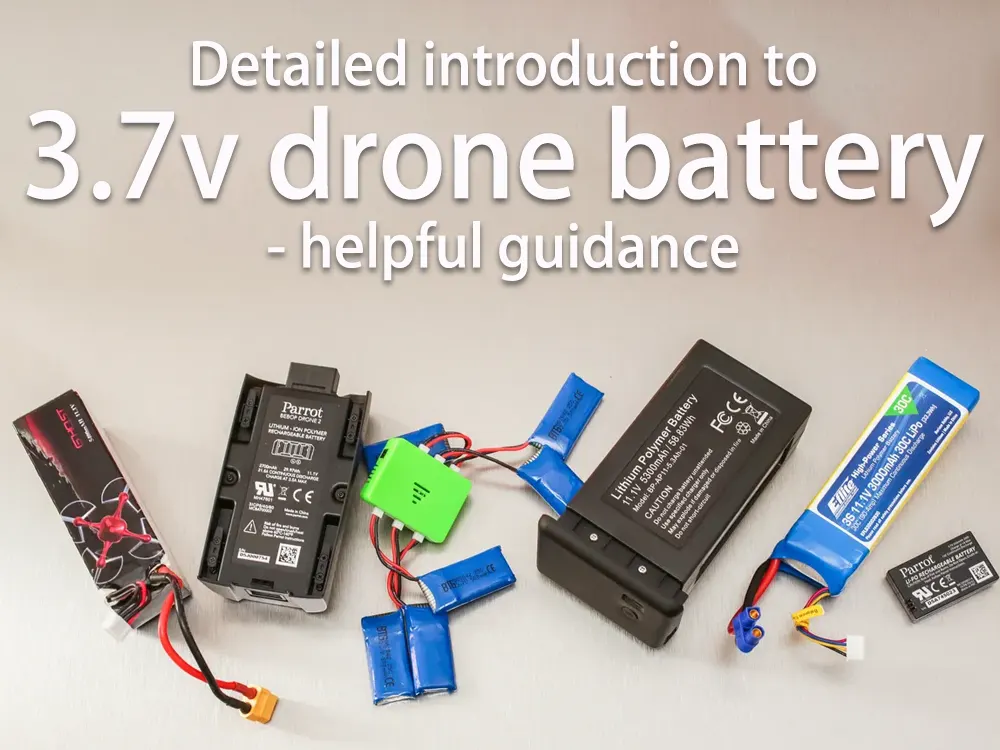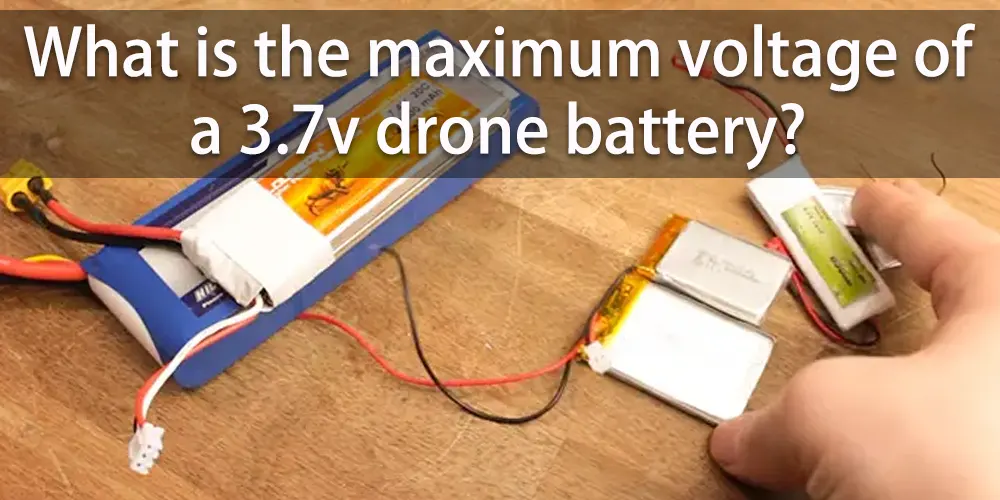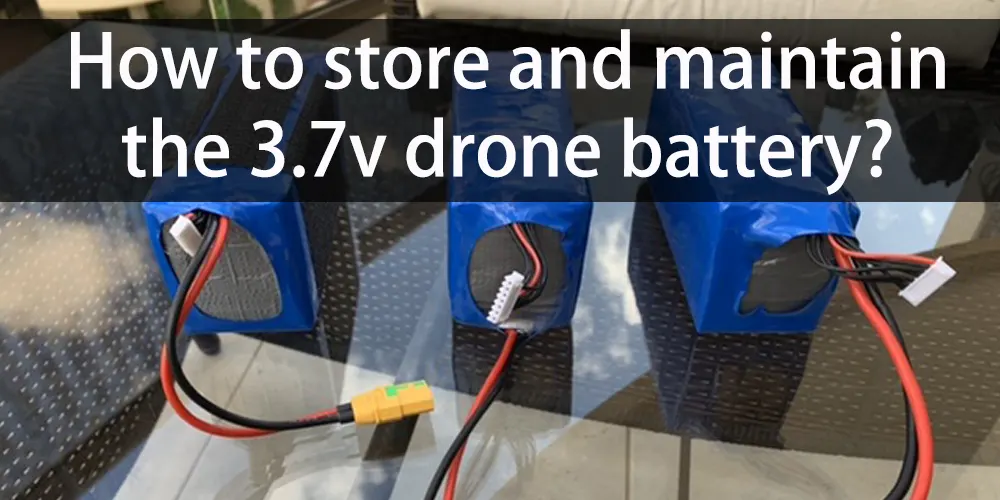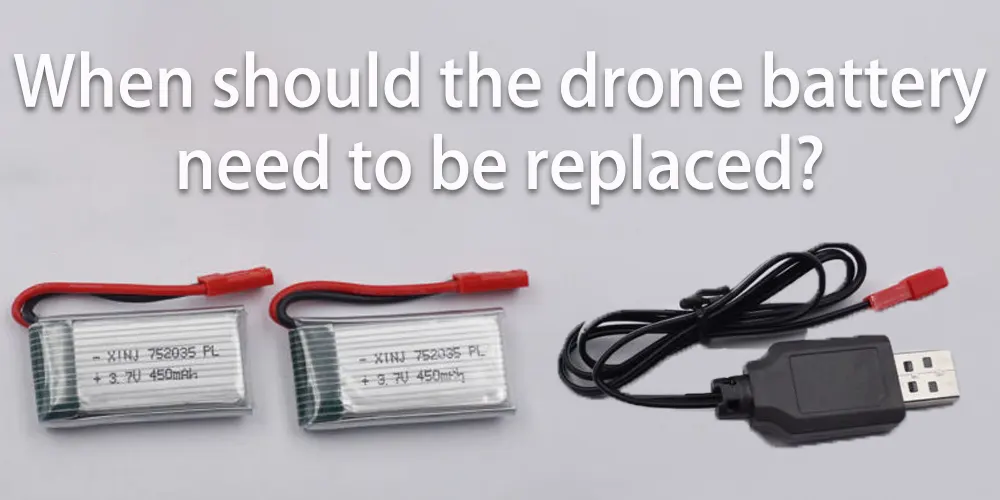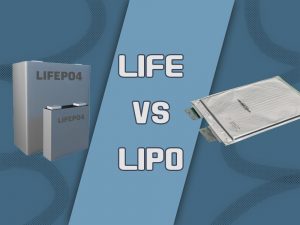Detailed introduction to 3.7v drone battery - helpful guidance

What is a 3.7v drone battery?
A 3.7v drone battery is a specific type of lithium polymer (LiPo) battery commonly used to power drones and other crewless aerial vehicles (UAVs). The “3.7v” in its name refers to the nominal voltage output of the battery. These batteries are designed to deliver a stable and consistent power supply to the drone, enabling it to take flight and operate various onboard systems.
What are the voltages of drone batteries? Are all drone batteries 3.7v?
Drone batteries come in various voltage configurations, and not all drone batteries are 3.7v. While 3.7v batteries are commonly used in smaller drones and micro quadcopters, larger and more powerful drones often require higher voltages to meet their energy demands. These higher-voltage drone batteries typically range from 7.4v to 22.2v, with some specialized drones utilizing even higher voltages.
What is the maximum voltage of a 3.7v drone battery?
The maximum voltage of a 3.7v drone battery depends on its configuration and the number of cells it comprises. A typical 3.7v drone battery is a single-cell LiPo battery, which means its nominal voltage is 3.7v. However, during charging, the battery voltage can rise to around 4.2v per cell, the maximum voltage limit for a fully charged LiPo cell.
Specifications of 3.7v drone battery pack
Specifications of a 3.7v drone battery pack can vary depending on the specific model and manufacturer. However, here are some standard specifications associated with 3.7v drone battery packs:
Voltage: The nominal voltage of a 3.7v drone battery pack is 3.7 volts. This voltage allows the battery to provide a stable power supply to the drone during flight.
Capacity: The capacity of a 3.7v drone battery pack is typically measured in milliampere-hours (mAh). Standard capacities range from around 300mAh to 1800mAh or more.
Cell configuration: 3.7v drone battery packs usually have a single-cell LiPo configuration. This means the battery pack contains one LiPo cell with a nominal voltage of 3.7v.
Connector type: The connector types on a 3.7v drone battery pack may vary, but the common connector types include JST (PH, XH) and Molex connectors. The connector allows easy and secure attachment to the drone power input.
Discharge rate: The discharge rate, also known as the “C rating,” represents the maximum safe continuous discharge current the battery pack can handle. Typical 3.7v drone batteries have discharge rates ranging from 10C to 25C or higher.
Charging: 3.7v drone batteries are rechargeable and require a specially configured battery charger. Charging times can vary depending on the battery’s capacity and the charging current used.
How long does a 3.7v drone battery last?
The flight duration of a 3.7v drone battery typically ranges from around 5 to 10 minutes, depending on factors such as the drone’s size, weight, and battery capacity. Smaller drones tend to have shorter flight times, while larger and more powerful drones can achieve longer duration.
How long does a drone battery 3.7v 1800 mAh last?
The flight duration of a 3.7v drone battery with a capacity of 1800mAh can vary depending on the specific drone model, weight, flight conditions, and the pilot’s flying style. As a general estimate, a drone battery of 3.7v 1800mAh can provide a flight time of approximately 8 to 12 minutes. However, it’s important to note that this is just an average range, and actual flight times may be slightly shorter or longer based on the above mentioned factors.
Comparison of 3.7v lithium polymer vs 3.7v 18650 and 21700 batteries
Form factor: 3.7v LiPo batteries are known for their compact and flexible form factor. They can be designed in various shapes and sizes to fit different drone or device configurations. In contrast, 18650 batteries and 21700 batteries are cylindrical and have specific dimensions, which may limit their compatibility with certain devices.
Energy density: LiPo batteries have a higher energy density than 18650 and 21700 batteries.
Discharge rate: LiPo batteries generally have higher discharge rates than 18650 and 21700 batteries.
Capacity: While all battery types have different capacity options, LiPo batteries often offer a wide range of capacities, including those specifically designed for drone applications. 18650 and 21700 batteries also come in various capacities, but their options may be more limited than LiPo batteries.
Rechargeability: LiPo, 18650, and 21700 batteries are all rechargeable, making them suitable for repeated use. However, it is important to note that each battery type may have different charging requirements and safety considerations.
Application compatibility: LiPo batteries are commonly used in the drone industry due to their compact size and high discharge rates. On the other hand, 18650 battery and 21700 battery are frequently used in applications such as laptops, flashlights, and electric vehicles, where their specific form factor and energy characteristics are advantageous.
What are the advantages of polymer lithium batteries as drone batteries?
Polymer lithium batteries offer several advantages as drone batteries:
High energy density: LiPo batteries have a high energy density, meaning they can store much energy relative to their size and weight. This allows drones to have longer flight times and improved overall performance.
Lightweight: LiPo batteries are lightweight compared to other battery types, making them ideal for drones. The reduced weight helps drones achieve better maneuverability and agility in the air.
Flexibility in shape and size: LiPo batteries can be manufactured in various shapes and sizes, offering flexibility in design and allowing them to fit different drone configurations. LiPo batteries can maximize product performance and make full use of the battery space of the drone.
High discharge rate: Polymer lithium batteries use colloidal electrolytes, which have more stable discharge characteristics than liquid electrolytes. Therefore, LiPo batteries can deliver high discharge rates, providing quick and consistent power output.
Rechargeable: LiPo batteries are rechargeable, allowing drone pilots to reuse them multiple times. This feature makes them a cost-effective option in the long run and reduces waste compared to single-use batteries.
Small battery internal resistance: Since the polymer lithium battery uses colloidal electrolyte, the internal resistance is smaller than that of the liquid battery. The reduction of internal resistance means that the self-consumption of the battery is reduced, which can prolong the battery standby time and output higher performance.
Safer: Since the polymer lithium battery is made of aluminum-plastic flexible packaging (belonging to the pouch battery), when a safety hazard occurs, at most there will be a bulge, and the safety performance is very high. Therefore, the polymer lithium battery is safer as a battery for drones.
How to use the 3.7v drone battery correctly?
Follow the under-mentioned guidelines for using a 3.7v drone battery correctly and safely.
Read the manufacturer’s instructions: Carefully read and understand the user manual and instructions the battery manufacturer provides for user guidelines and safety precautions.
Charge with a compatible charger: Use only a charger specifically designed for 3.7v LiPo batteries and compatible with the battery capacity.
Charging safety: Always charge your drone battery away from flammable materials. Do not leave the battery unattended during the charging process. Follow the recommended charging time.
Proper storage: Store the 3.7v drone battery in a cool, dry place away from direct sunlight and extreme temperatures. It is recommended to store them in a LiPo safe bag or container specifically designed for battery storage.
Check battery health: Regularly inspect your drone battery for any signs of damage or swelling. If you notice any abnormalities, such as punctures, dents, or an inflated appearance, discontinue using the battery and dispose of it properly.
Safe handling: Always handle your drone battery with care. Avoid dropping or mishandling the battery, which can lead to internal damage or short circuits. Keep the battery terminals clean and free from debris.
Flight time monitoring: Keep track of your drone’s flight time and land the aircraft before the battery’s charge level becomes critically low. Discharging the battery beyond its recommended limit can damage or affect its future performance.
Battery replacement: If you notice a significant decrease in flight time or performance, it may be time to replace your drone battery. Using an old or degraded battery can impact flight safety and overall performance.
How to store and maintain the 3.7v drone battery?
The following guidelines are important to store and maintain a 3.7v drone battery.
Storage temperature: Store the battery in a cool and dry place, away from direct sunlight and extreme temperatures. Avoid exposing the battery to excessively hot or cold environments, as extreme temperatures can affect its performance and longevity.
Discharge level: Before storing the battery for an extended period, discharge it to around 50-60% of its capacity. This helps prevent over-discharge during storage and ensures the battery remains in a stable state.
Battery protection: Store the battery in a fireproof and non-conductive container or LiPo safe bag specifically designed for battery storage.
Battery health: Regularly inspect the battery for any physical damage, swelling, or leakage. If you notice any abnormalities, do not use the battery and dispose of it properly.
Charging interval: If you store the battery for an extended period, it is recommended to perform a maintenance charge every few months. This involves charging the battery to around 50% of its capacity before storing it again.
Charge before use: Before using a stored battery, ensure it is fully charged using a recommended charger.
Avoid overcharging: Never leave the battery unattended during the charging process, and avoid overcharging the battery. Once the battery is fully charged, disconnect it from the charger promptly.
Dispose of damaged batteries: If the battery becomes damaged, swollen, or exhibits signs of deterioration, do not use it.
When should the drone battery need to be replaced?
Drone batteries should be replaced under the following circumstances:
Significant decrease in flight time: If you notice a substantial reduction in your drone’s flight time compared to when the battery was new, it may be an indication that the battery is losing its capacity.
Swelling or physical damage: If you observe any signs of swelling, bulging, or physical damage to the battery, such as punctures or dents, it is crucial to discontinue using the battery immediately and replace it.
Inconsistent or unreliable performance: If the battery exhibits inconsistent performance, such as sudden voltage drops or unexpected shutdowns during flight, it may indicate a degraded or faulty battery.
Excessive aging: Over time, even with proper maintenance, drone batteries naturally age, and their overall performance declines. If your battery has been in use for an extended period, it may be advisable to consider replacement to ensure optimal performance and flight safety.
Manufacturer’s recommendations: Check the manufacturer’s guidelines or specifications for the recommended lifespan of the battery. Some manufacturers provide estimated lifespans or maximum charge cycles for their batteries. Follow the instructions.
How to choose the best 3.7v battery for your drone?
When selecting the best 3.7v battery for the drone, you can consider the following factors:
Battery capacity: The battery capacity determines the drone flight time. Higher capacity batteries generally offer longer flight duration. Assess your flying needs and choose a battery with an appropriate capacity that meets your requirements.
Weight and size: Consider the weight and size of the battery to ensure it fits your drone’s specifications and does not exceed its weight limitations. Balancing the battery’s capacity and weight is crucial for optimal performance and flight stability.
Compatibility: Check the battery’s compatibility with your drone model. Ensure the battery’s voltage, connector type, and dimensions align with your drone’s power requirements and battery compartment.
Discharge rate: Consider batteries with higher discharge rates if you require high-performance flight capabilities. Higher discharge rates allow the battery to deliver power more quickly, resulting in improved acceleration and maneuverability.
Brand and quality: Opt for batteries from reputable brands known for their quality and reliability. Well-established brands often provide better performance, safety features, and customer support.
Price: Consider your budget when selecting a battery. While quality and performance are essential, find a balance between affordability and meeting your drone’s power requirements.
Safety features: Look for batteries with built-in safety features such as overcharge, over-discharge, and short-circuit protection.
Warranty: Check if the battery comes with a warranty. A warranty can provide peace of mind and protection against defects or premature failures.
Conclusion
Drone batteries provide the necessary power for drones. With their high energy density, compact size, and lightweight design, these batteries offer advantages such as longer flight times, improved maneuverability, and enhanced portability. The versatility of 3.7v drone battery, coupled with their rechargeable nature, makes them popular among drone enthusiasts and professionals.
However, proper handling, storage, and maintenance are crucial for maximizing the lifespan and ensuring the safe usage of these batteries. Following manufacturer guidelines, adhering to safety precautions, and considering factors such as capacity, compatibility, and quality, you can choose the best 3.7v drone battery for your specific needs.

